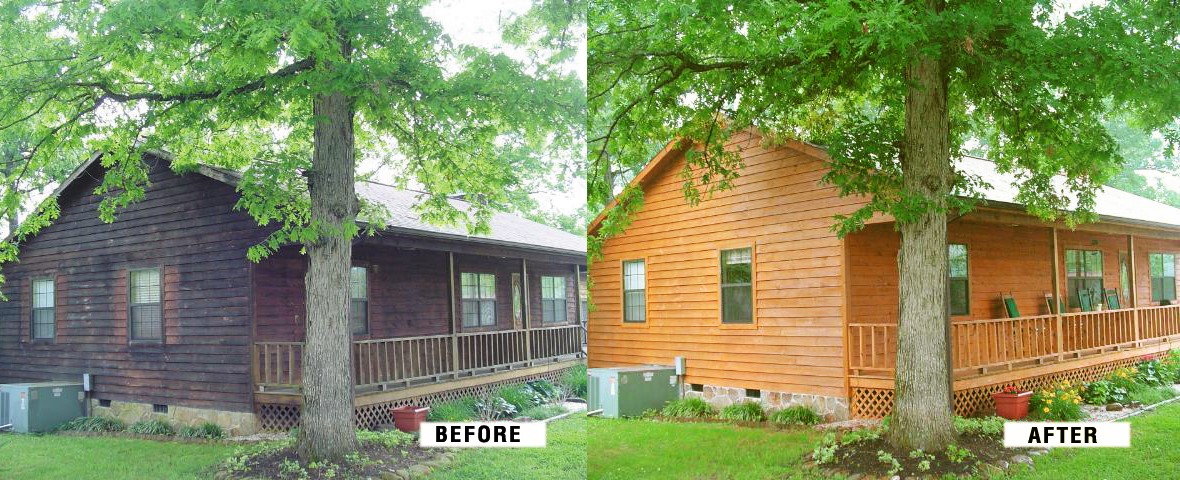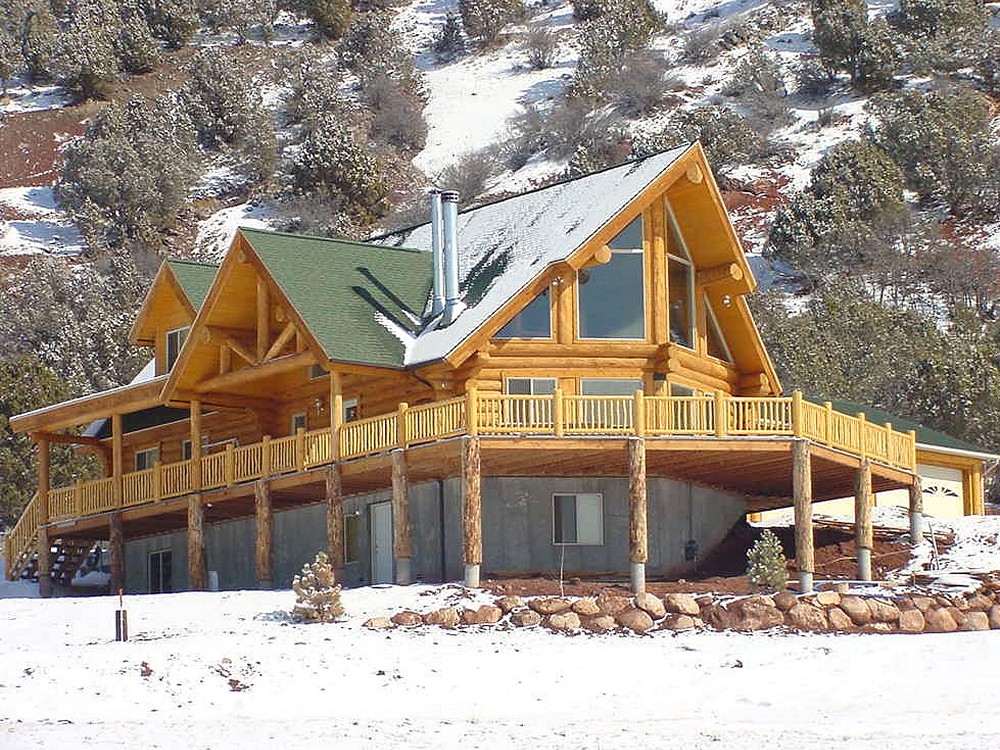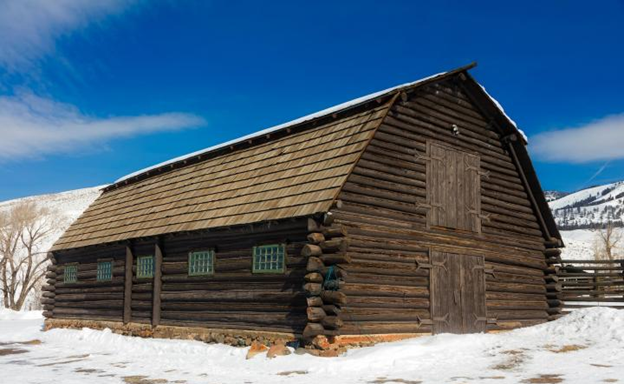 Perma-Chink Systems, Inc
Log & Timber Home Care Experts
Perma-Chink Systems, Inc
Log & Timber Home Care Experts
Spring Cleaning! Steps to Prolong the Life of Your Log Home
Every Spring life begins anew. Flowers bloom, trees blossom, and the grass grows thick and green. The springtime is the perfect time to clean and start fresh! Log homes have their own cycles of maintenance, slightly different than a stick-built home. We have found that in the springtime, it's an excellent time to get things ready for the summer and shake off the wet fall and winter.
We will walk you through our recommended process to ensure your home keeps looking great for a long time. From cleaning to inspection to evaluating your log home's finish, we'll prepare you with a system that's easy to follow.
Looking At Refinishing Your Log Home?
One of the facts of life in preserving the beautiful look of natural logs is that they eventually need to be refinished. Conventional homes are repainted, but log homes are restained. There is a lot more to consider with the latter: Is the existing finish intact enough to simply restain? Do you want to restain in a different color? Has the home been a little neglected in the past? Are there water stains or you want a lighter color, what do you do?

If the stain is aged or has water stains, or the logs look quite weathered, returning the logs to a consistent natural appearance is necessary in the restaining process. But what options do you have for getting those logs back to their natural look before applying the stain? We have listed the options for finish removal below, to help you determine which method is the best choice for your situation.
Perma-Chink Systems History Over 40 Years
The Beginning
In 1980 my neighbor told me about building a log home in Eastern Washington. He said that he loved the home and the lifestyle but was disappointed that with the wind constantly blowing and harsh cold winters, there was no real effective way to seal the gaps between the logs. The house leaked air and heat, and wind-driven rain literally came right through the walls.
He tried various caulking materials with little success. Caulking around a bathtub or sink was significantly different from ‘caulking’ literally miles of seams between logs in a log house. After a number of conversations and experiments, it became apparent that there was no readily available product that could seal the gaps, look like authentic chinking, and last more than a few months.
After literally months of trial and error, it became apparent that if we were going to design a material that would be acceptable, we would have to design it ourselves.
More than 20 years has passed since NASCAR's Mike Helton announced to the world, "we lost Dale Earnhardt." Arguably one of the greatest racers ever, Earnhardt both divided and united fans with his on-track persona as "The Intimidator" and his relationship with his fans and fellow drivers. After two decades since his death, his loss is still felt within the racing community. In rememberance of Earnhardt on the anniversary of his death at the end of the 2001 Daytona 500, our own Tony Huddleston conveys working with Earnhardt on his log home years earlier.
THE LEGEND LIVED IN A LOG HOME
My first meeting with Dale Earnhardt happened at the Knoxville airport as he flew in to meet with me regarding the color choices on his new home. I took stain samples with me for the meeting and he and I applied what we currently had, and he was very clear that he wanted it darker and felt I should travel to the jobsite so we could work out the colors.
Lifeline Ultra-7 turns ten in 2021!
Introduced ten years ago, Lifeline Ultra-7 quickly became the premier finish for log and timber homes. Upon introduction, Ultra-7 improved coverage rates and added even more color options for the Lifeline family. Today, the best-selling Ultra-7 remains the go-to finish for exceptional longevity and color retention for log and timber homes. Paired with Lifeline Advance topcoat, Ultra-7 keeps your log home looking beautiful for years and years.
There are many great things about log homes that make them appealing to the owners and future owners. Usually at the top is the look and design of the log home, capturing the spirit of the frontier and settling the wild west. Sometimes a custom home, sometimes an ordered home from a builder, but definitely a chosen home for the owners. Achieving this look is completed with the final design choice - the color of the log stain and log sealant. The two main options are contrasting colors or blended colors. Our stains and finishes pair with our sealants to make sure your home looks the best, no matter what you decide.
How To Create Dust-Free Log Homes
We decorate our log and timber homes for not only holidays, but seasons, too. And after Thanksgiving and Christmas, putting away all those decorations revealed one of the most annoying things about homes: dust.
Dust gets everywhere. It’s never-ending. We have terms for giant amounts of dust called dust bunnies. It makes us sneeze – constantly. It’s ridiculous! No matter what it used to clean the dust, it returns!
Why Log Boss
Why should you use the Log Boss over what you are currently using? That is a question we are often asked when we are showing these fasteners to potential customers.
We looked a several options that were in use for fastening the logs and timbers together. The search turned up various way builders were putting things together. The old way was the use of long spiral nails that were driven in with a very large hammer, which was very tiring - especially if you had to install the nails every foot or so for the whole house. Also, lag screws were used by builders to assemble logs together. The lag screw installation requires pre-drilling and drilling a countersunk hole for the head to go into. It also required the use of a large electric impact drill to effectively set the lag screws, or a large ratchet along with a very strong person to complete the installation.
 It’s time to close up remote and vacation cabins for the winter. For most vacation homes, the close-up process usually occurs after Labor Day, but we all try to squeeze out a few more weekends as the weather allows.
It’s time to close up remote and vacation cabins for the winter. For most vacation homes, the close-up process usually occurs after Labor Day, but we all try to squeeze out a few more weekends as the weather allows.
Are American Barns disappearing? Not so fast...
There are thousands of iconic barns throughout America, from different periods in our history. These historic barns were once an integral part of American life.
The traditional design and use of the “barn” has evolved tremendously over the years. We have moved from large, open structures based around cattle stalls and hay storage to huge multi-purpose barn palaces.